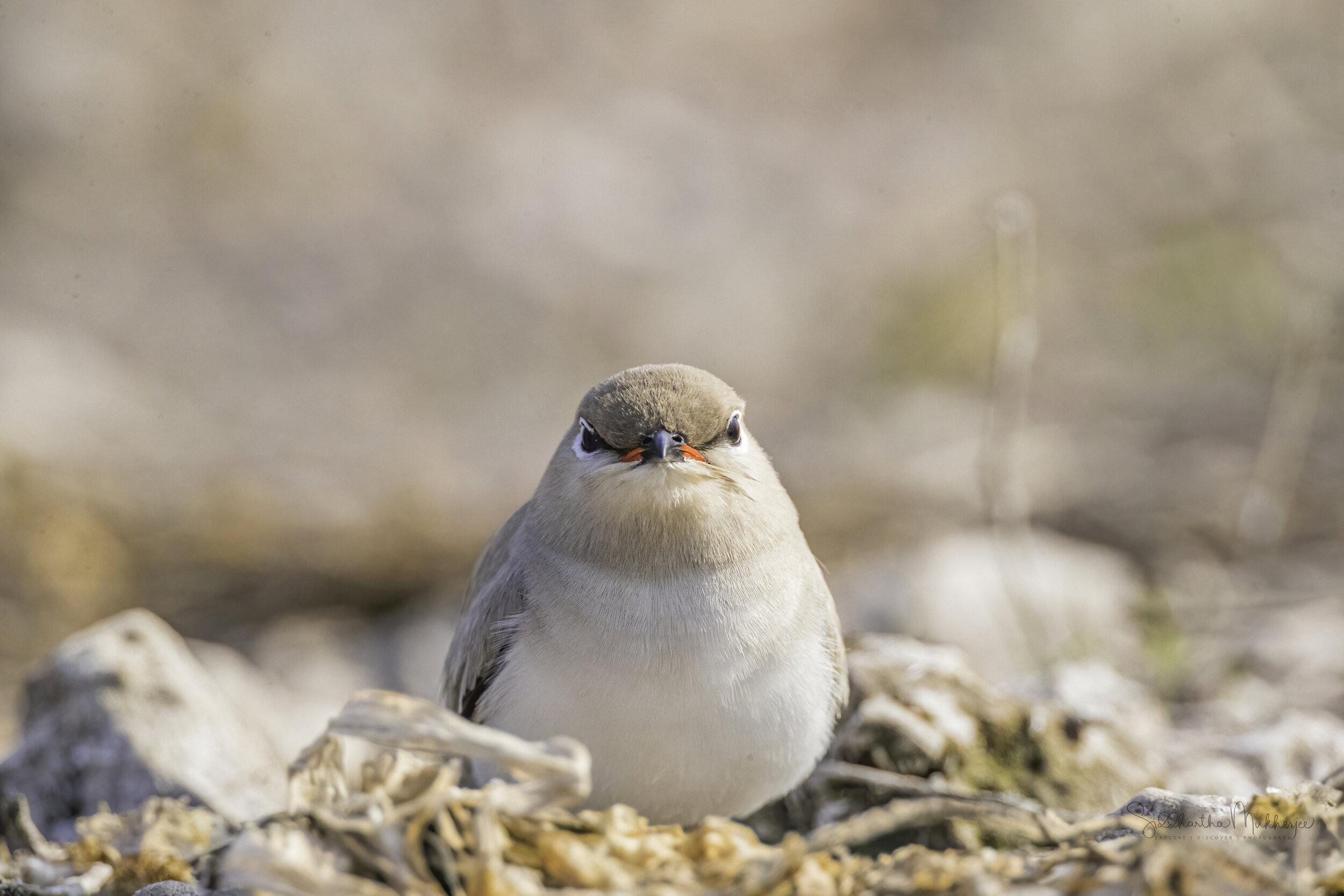Small Pratincole
Glareola lactea
Bhigwan Bird Sanctuary
The Small Pratincole, Little Pratincole, or Small Indian Pratincole (Glareola lactea), is a small wader in the pratincole family, Glareolidae. A small bird that resembles a combination of a dove, a swallow, and a plover. It is a soft gray-brown with a tan wash on the throat and black lores. It has a black-and-white wing pattern prominent in flight which is agile and erratic, resembling a bat or swallow and frequently in flocks at dusk. This bird has short legs, long pointed wings and a short tail. Its short bill is an adaptation to aerial feeding. On the ground, it looks mainly pale grey (hence lactea, milky). The crown of the head is brown.
They favour rocky or sandy islands in rivers and in this case a reservoir, but can also be found in marshes, estuaries, and lakesides. The Small Pratincole is distinguished from other pratincoles in range by their smaller size and gray plumage. Their calls are a high rolling “chirrit!”, reminiscent of terns.
The most unusual feature of the pratincoles is that although classed as waders they typically hunt their insect prey on the wing like swallows, although they can also feed on the ground. They are a species of open country, and are often seen near water in the evening, hawking for insects.
They are resident breeders in India, Western Pakistan, Bangladesh, Burma, Laos, Cambodia, Sri Lanka and Thailand breeding from December to March.
I had the good fortune to get really close to a pair of these gorgeous birds at the Bhigwan Bird Sanctuary at Kumbhargaon. Close enough to see our own reflections in its eye.
‡‡‡‡‡
Small Pratincole
The Ujni backwater wetlands is a shallow waste water reserve formed by the discharge of water from the Pune region dams like Panshet, Pawna, Khadakwasla, Varasgaon, Temghar, etc. This semi waste water has created an excellent wetland based ecosystem supporting a large variety of water birds, both endemic and migratory, and also helped with the local agriculture. Nearly 300 species of endemic and migratory birds have been recorded here. The rainfall in the Pune region decides the water level in Ujni dam. Lesser the water, the shallower it is and therefore more birds make it their home in the winter.
Surrounding this lush ecosystem are the rich grasslands and fertile farms home to an impressive list of birds, mammals and reptiles. The area around these backwaters are also unique with rich farmlands and dry deciduous scrub forest with interspersed grasslands. Home to an impressive list of birds, mammals and reptiles they protect many mammals like the Chinkara, Hyena, Wolf and Indian fox and are also popular for grassland birds and the birds of prey, including the magnificent eagles & harriers I’ve talked about in earlier blogs.
Read about the eagles & harriers of Kumbhargaon:
The endangered Steppe Eagle, vulnerable Greater Spotted Eagle & the rare and also vulnerable Eastern Imperial Eagle.
The beautiful Pallid Harrier, Montagu’s Harrier & Eurasian Marsh Harrier.
There are also other spectacular species like the Short-eared Owl, Spotted Owlets, the Indian Courser inhabiting the grasslands. On our final day we were dedicated to finding the waders and the day started well with the Agnipankha (Greater Flamingo) at dawn, then the Ruddy Shelducks and along with them a gaggle of Bar-headed Geese.
During our time here we were hosted by and had the expert help of Sandip Nagare and his team of knowledgeable guides from the Agnipankha Bird Watcher group, especially Ganesh Bhoi, who went out of their way to ensure we had fantastic opportunities to explore, discover, observe & photograph over 82 species of birds and wildlife including some rare ones. We stayed at Sandip’s homestay of the same name and had the added pleasure of indulging in delectable home cooked food.
I spent a couple of days with some friends in Kumbhargaon village, the winter home for an immense variety of birds like Grey Herons, Painted Storks, Brown Headed Gulls, River Terns & Little Terns, the Black-headed & Red-naped Ibis, Little Ringed Plover, Osprey and the Peregrine Falcon to name a few.
‡‡‡‡‡
Related Posts



























